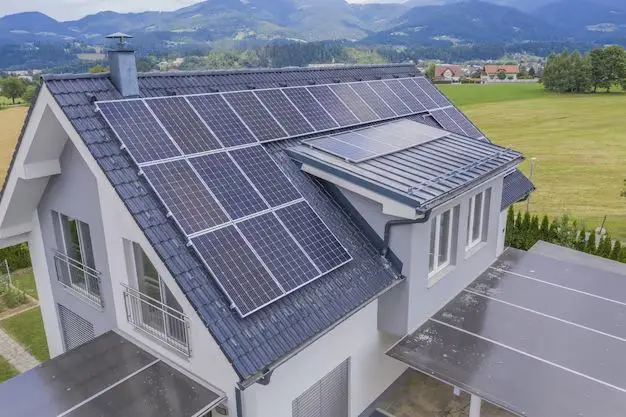Solar power is rapidly becoming one of the most important sources of renewable energy. With the right conditions, solar power can provide clean, sustainable electricity to homes and businesses. But how much electricity can actually be generated from solar power? Let’s take a look at the math behind a 100MW solar power plant to get an idea of how many homes it could potentially power.
Page Contents
Key Facts on 100MW Solar Power
First, let’s establish some key facts and figures around a 100MW solar power plant:
- 100MW is a medium-large scale solar farm. Utility-scale solar farms are typically between 50MW and 500MW.
- 100MW could produce around 170,000 MWh of electricity per year. This factors in about 20% efficiency loss from conversion and transmission.
- The solar farm would likely need 250,000-500,000 solar panels rated around 400W each. Panels are usually arranged in rows spanning multiple acres of land.
- Total land area would be 400-800 acres for a 100MW solar farm. This depends on the solar irradiance and spacing between panels.
Estimating Homes Powered by 100MW Solar
Now let’s estimate how many households could be powered by a 100MW solar energy plant. Here are the key estimations and assumptions:
- Typical household electricity consumption is 10,000 kWh per year.
- With 170,000 MWh per year, the 100MW solar farm could power 17,000 households.
- This assumes average sunshine and no battery storage. More sun = more power generation.
- Home electricity use can vary greatly. Larger homes and electric heating/cooling can use 20,000+ kWh per year.
Given these assumptions, we can estimate the 100MW solar farm could provide power to approximately 15,000-20,000 homes on average. This is a significant amount of electricity from one medium-large solar installation!
Factors That Affect Solar Power Output
There are several key factors that affect how much electricity a solar power plant can actually produce:
- Solar Irradiance – Areas with more annual sunlight can generate up to 30% more power. Deserts are ideal locations.
- Panel Efficiency – More efficient solar panels can squeeze more electricity from the same amount of sunlight.
- Tracking Systems – Moving panels to track the sun’s path can boost output up to 30%.
- Weather – Overcast and rainy days can cut power generation significantly.
- Battery Storage – Batteries allow excess power to be stored and used at night. But they add significant cost.
Accounting for these factors can raise or lower solar power production compared to the initial 100MW estimate. Maximum optimization could potentially power up to 30,000 households in sunny, high efficiency solar installations.
Solar Potential to Power Homes and Businesses
This quick analysis shows the potential of medium-scale solar plants to generate clean renewable energy to homes and businesses. Expand this math to larger 500MW+ solar farms with optimized output, and you can see how solar could realistically provide a large portion of electricity demand across entire regions.
Of course, intermittency remains an issue. The sun doesn’t always shine! But combining solar generation with battery storage, demand management, and grid integration will enable higher and higher solar penetration into electricity systems worldwide.
Conclusion
To summarize, a 100MW solar farm could reliably power an estimated 15,000 to 20,000 households on average in most regions. This assumes around 170,000 MWh of annual electricity generation from the solar plant. Output can be higher or lower based on location, panel efficiency, and other factors. While solar intermittency remains a challenge, the potential for medium and large-scale solar to meet significant electricity demand is clear. With grid and storage solutions to smooth output, solar power can increasingly displace fossil fuels to power homes with clean renewable energy.
